

Coin Laundry Machine Commercial 10KG 15KG 20KG Coin Washing Machine With Dryer Prices In Commercial Laundry Equipment


Garment Folding Bagging Machine Surgical Gown Towel Packaging Stacking Machine Auto T-shirt Folder Machine

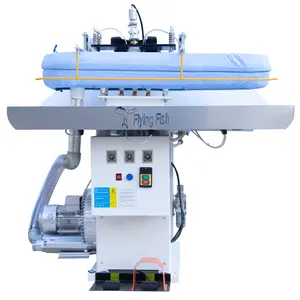






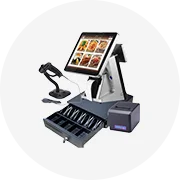
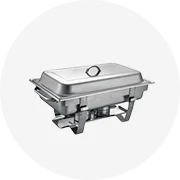
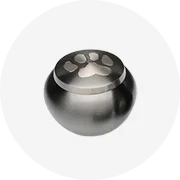
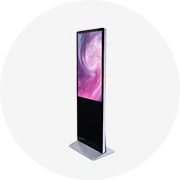
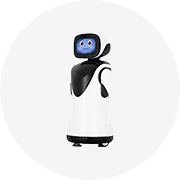
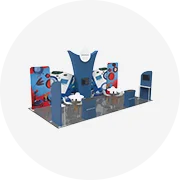
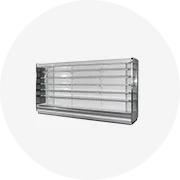
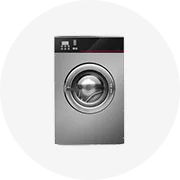
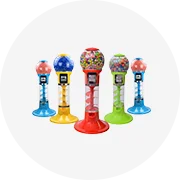
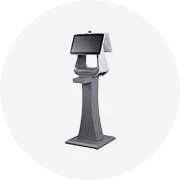
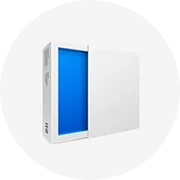

In the fast-paced world of commercial laundry, choosing the right laundry press machine is not just a matter of efficiency—it's a cornerstone for business success. With a myriad of options available, particularly on platforms like Alibaba.com, it's crucial for businesses to navigate the complexities of these machines to find one that aligns with their operational demands. From understanding the fundamental differences between home and commercial presses to evaluating the diverse types available, this guide aims to equip businesses with the knowledge to make an informed decision that will enhance their service quality and productivity.
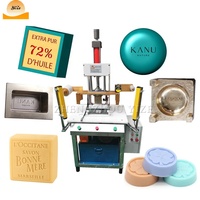
A steam press, once a staple in dry cleaning establishments, has evolved to become an essential tool in both home and business settings. The fundamental differences between a home steam press and one designed for business use are significant, primarily due to the volume of laundry processed. A typical home steam press is used sporadically, catering to the needs of an average family, perhaps once or twice a week.
In contrast, a business-oriented laundry press is engineered to withstand the rigors of processing thousands of pounds of laundry each week. This stark contrast in usage levels underscores the necessity for businesses to understand the specific attributes and capabilities of commercial laundry presses. The design, durability, and functionality of these machines are tailored to meet the high demands of a business environment, where efficiency and reliability are paramount.
When considering the acquisition of a laundry press for commercial use, it's crucial to recognize these differences. The scale of operation not only influences the choice of machine but also impacts the overall laundry process, from the frequency of use to the required features and settings. Identifying the right type of laundry press machine on platforms like Alibaba.com involves a careful assessment of these factors to ensure that the selected equipment aligns with the operational needs of the business.

Alibaba.com showcases a diverse range of laundry press machines designed to meet the needs of different commercial and industrial laundry operations. These machines include fully automatic and manual options, catering to various preferences and requirements. Among the selection, one can find laundry press machines suitable for a laundromat setting, which are coin or card operated and come in stacked configurations for efficient use of space.
The platform also offers specialized machines such as commercial linen laundry steam press machines, which are ideal for ironing and pressing clothes with high efficiency. For businesses dealing with bulk clothing, balers and baling machines are available, which are used for pressing used clothes into compact bales for sale or recycling.
In terms of capacity, the range includes machines from 10kg to 130kg, accommodating small to large-scale laundry requirements. The industrial segment is served with heavy-duty machines that can handle up to 485 pounds of laundry, making them a robust choice for large laundromats and industrial applications.
For establishments prioritizing space-saving solutions, Alibaba.com offers vertical front-loading washers and stackable units. These machines are designed to maximize floor space while still providing the full functionality required for effective laundering. Additionally, the site lists various ironing and pressing equipment, including those suitable for hotel use, garment steam pressing, and utility presses for woolen fabrics and uniforms.
When differentiating between commercial and industrial laundry presses, it's essential to understand their distinct capacities and design features. Industrial laundry presses are engineered for high-volume operations, equipped to manage large quantities of linens with robust construction that includes metal or cast iron parts and stainless steel baskets. They are typically utilized by large-scale laundry services, hotels, hospitals, and similar institutions that require continuous, heavy-duty use.
Commercial laundry presses, on the other hand, are designed to be more user-friendly, with features that allow for ease of use without the need for specialized staff. These machines are suitable for businesses with smaller laundry loads, such as gyms, spas, and small health facilities. They offer programmability and one-touch operation, making them accessible to a broader range of employees and ensuring efficient handling of daily laundry needs.
The choice between commercial and industrial laundry presses hinges on the specific demands of the business, including the volume of laundry, the frequency of use, and the desired features for operation. While both types are built for durability, industrial machines are tailored for constant, heavy use, whereas commercial presses are intended for less frequent use but still maintain a high level of durability and efficiency.
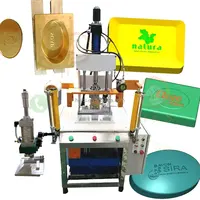
When selecting a laundry press machine, it's essential to consider the type of control it offers. Machines with few controls require users to gauge the pressing time manually, which can be less precise. In contrast, digital presses come with control panels that enable adjustments for heat and steam settings, catering to different fabric types.
The design of the laundry press is another critical feature. Tabletop units are compact, with a design that prevents the hot plates from contacting surfaces beneath. Stand-alone models come with built-in stands, offering flexibility in placement without occupying table or countertop space.
Operational aspects are also vital. The process involves filling the machine with water, heating it up, and then using the steam produced to press the fabric between two plates. This method is efficient for wrinkle removal, contrasting with the back-and-forth motion required with traditional irons.
However, there are considerations to keep in mind. Laundry presses require space and storage, and their water tanks need daily cleaning to prevent bacterial growth. Safety is another concern, as improper use can lead to burns or scalding. Therefore, ease of use and maintenance are significant factors in the decision-making process.
Laundry press machines come in various sizes, designed to meet different volume and space requirements. The models highlighted range from compact units, such as the 55cm ironing press, suitable for smaller operations, to the Ultra XL Steam Ironing Press at 90cm, which represents the largest option for home use. Additionally, professional heavy-duty models are available, extending up to 101cm, catering to businesses that handle larger items or higher volumes of laundry. The size of the press directly correlates with the ironing surface area, which can significantly reduce ironing time. When considering a laundry press machine, it's essential to assess the available space and the expected laundry load to ensure the selected size aligns with operational needs.
Understanding the appropriate temperature and pressure settings is crucial when selecting a laundry press machine. Different fabrics require different iron settings to avoid damage. For instance, delicate materials such as acetate, acrylic, nylon, and beaded fabrics should be ironed at the lowest setting, below 110 degrees, and without steam to prevent scorching. It's advisable to iron these fabrics on the wrong side or with a protective cotton cloth in between.
Medium-weight fabrics like polyester, silk, satin, and wool can tolerate a medium temperature range between 110 and 150 degrees. While polyester may be slightly dampened, silk, satin, and wool should be ironed on the wrong side or with a cloth barrier, avoiding steam or moisture. On the other hand, heavier fabrics such as linen, cotton, and denim, which are prone to deeper wrinkles, require higher heat settings, from 150 to 200 degrees. Steam or a spray of water can be used to loosen the fibers and smooth out wrinkles more effectively.
When using a laundry press machine, it's important to adjust the temperature according to the fabric type and wait for the machine to reach the correct setting before pressing. After use, allowing the machine to cool down properly before storing is essential for safety and maintenance. By adhering to these guidelines, businesses can ensure their garments are pressed efficiently without damage, maintaining a professional appearance.
For ensuring ease of use and maintenance in laundry press machines, it's crucial to adopt a proactive approach. Regular inspections are key; by checking the equipment at the start and end of each day, potential issues can be identified early, preventing costly downtime. Maintaining a detailed record of machine performance, including any errors or repairs, is essential for tracking and managing maintenance efficiently.
Adherence to a maintenance schedule is vital. This not only keeps the equipment in optimal condition but also ensures that maintenance tasks are consistently addressed, even during busy periods. Familiarity with the equipment's manual is important for understanding specific maintenance requirements and troubleshooting issues.
In terms of cleanliness, it's important to keep both the machines and their surroundings free from debris to prevent damage and ensure a sanitary work environment. For more complex issues, especially those involving electrical components, seeking professional assistance is advisable to avoid further complications. Implementing these practices will contribute to the longevity and reliability of laundry press machines.
When considering the material and build quality of laundry press machines, it's essential to focus on the standard of raw material selection. The construction of these machines often involves a meticulous quality control process to ensure durability and performance. Manufacturers prioritize the use of materials that contribute to the machine's fuel and energy efficiency. The design of the equipment is user-friendly, aimed at maximizing efficiency and production levels. Additionally, a responsible approach towards environmental impact is considered in the manufacturing process, reflecting a commitment to sustainability. It's important for buyers to look for machines that are produced by companies with certifications that attest to their commitment to quality and environmental standards.
Utilizing a high-quality laundry press machine introduces several advantages to a business operation. These machines are designed to handle large volumes of linens, providing a professional level of cleanliness and finish that is difficult to achieve with standard washing and ironing. The efficiency of a good laundry press machine translates into a quicker turnaround, which is crucial for businesses like hotels and restaurants that require a constant supply of clean linens.
Moreover, the use of a laundry press ensures compliance with industry standards. For businesses that must adhere to strict hygiene regulations, such as healthcare facilities, the consistent results from a laundry press machine help in maintaining the required standards. This compliance is not just about meeting legal requirements but also about ensuring customer safety and satisfaction.
In terms of productivity, a laundry press machine allows staff to focus on their primary tasks rather than spending time on laundry. This can lead to a happier and more productive workforce. Additionally, the professional finish provided by a laundry press machine contributes to the overall image of the business, demonstrating a commitment to quality and attention to detail. This professionalism can help in building credibility and trust with customers, potentially leading to increased business opportunities.
Energy-efficient laundry equipment, such as laundry press machines, plays a pivotal role in enhancing the operational efficiency and productivity of laundry facilities. These machines are engineered to consume less water and energy, which translates into significant savings on utility costs. By optimizing resource usage, laundry businesses can experience a direct impact on their profit margins. The reduced operational expenses allow for a more sustainable business model, enabling owners to potentially reinvest savings into expanding services and attracting a broader customer base. Furthermore, the adoption of energy-efficient machinery is not only a financially prudent decision but also an environmentally responsible one. It aligns with growing consumer awareness and demand for sustainable practices, as these machines contribute to lower greenhouse gas emissions and reduced fossil fuel consumption. This shift towards eco-friendly operations can enhance a laundry facility's reputation, making it a preferred choice for environmentally conscious customers.
In the realm of commercial laundry, the durability of equipment is a critical consideration. The typical lifespan of a commercial laundry machine, which can be analogous to laundry press machines, generally ranges from 10 to 15 years. This duration, however, is influenced by several factors such as the brand, model, and maintenance practices.
The longevity of these machines can be extended through thorough refurbishment. This process may include replacing essential components like bearings and valves, which contributes to the reliability and extended service life of the equipment.
The construction of the machine plays a significant role in its durability. For instance, a solid steel frame can withstand considerable wear and tear, barring issues like chemical corrosion. Properly restored, such frames can support the functionality of laundry presses for many additional years.
When considering the purchase of used machines, it's important to note that the market can be challenging due to limited supply and the potential obsolescence of parts. Despite these challenges, with careful selection and maintenance, a laundry press can be a durable and long-lasting addition to commercial laundry operations.
In conclusion, the selection of a suitable laundry press machine is a critical decision for any business looking to optimize its laundry operations. The guide has highlighted the importance of understanding the differences between commercial and industrial presses, the variety of machines available on Alibaba.com, and the key features to consider, such as control types, design, operational aspects, and material quality. Additionally, the benefits of high-quality presses, including compliance with hygiene standards, improved productivity, and energy efficiency, have been underscored. Lastly, the aspects of efficiency, productivity, longevity, and durability have been discussed to ensure that businesses invest in a machine that not only meets their current needs but also stands the test of time. By carefully considering these factors, businesses can select a laundry press that ensures a professional finish, complies with industry standards, and contributes to a more sustainable and profitable operation.